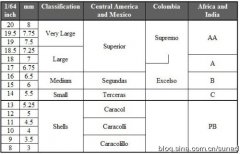Barista barista coffee conditioner

Since about 1990, the English word Barista has been used to refer to an expert in the production of espresso (Espresso)-related drinks. Italian Barista, corresponding to English bartender (bartender). It is called a barista or coffee conditioner in Chinese.
The earlier title of Barista was more straightforward "espresso puller". The term has changed more or less because most espresso machines made after 1980 no longer have a handle.
At present, Barista can be summarized from a novice standing at the bar to a coffee waiter (coffee sommelier) who has accumulated many years of experience.
Starbucks uses Barista to address its employees (Taiwan's internal Starbucks uses partners).
Important Notice :
前街咖啡 FrontStreet Coffee has moved to new addredd:
FrontStreet Coffee Address: 315,Donghua East Road,GuangZhou
Tel:020 38364473
- Prev

Starbucks coffee test questions barista certification
- Next

10 factors to consider when choosing raw coffee beans
The raw bean seller is mainly responsible for grading the coffee beans before selling them to the coffee bean merchant. After the grading is completed, premium coffee beans and boutique coffee beans will be selected, although they will have some defects but do not affect the coffee rating. These defects are not so serious, but they can also cause potential damage to the quality of coffee. Although Cupping is undoubtedly the most definite way to check coffee beans.
Related
- Beginners will see the "Coffee pull flower" guide!
- What is the difference between ice blog purified milk and ordinary milk coffee?
- Why is the Philippines the largest producer of crops in Liberia?
- For coffee extraction, should the fine powder be retained?
- How does extracted espresso fill pressed powder? How much strength does it take to press the powder?
- How to make jasmine cold extract coffee? Is the jasmine + latte good?
- Will this little toy really make the coffee taste better? How does Lily Drip affect coffee extraction?
- Will the action of slapping the filter cup also affect coffee extraction?
- What's the difference between powder-to-water ratio and powder-to-liquid ratio?
- What is the Ethiopian local species? What does it have to do with Heirloom native species?

